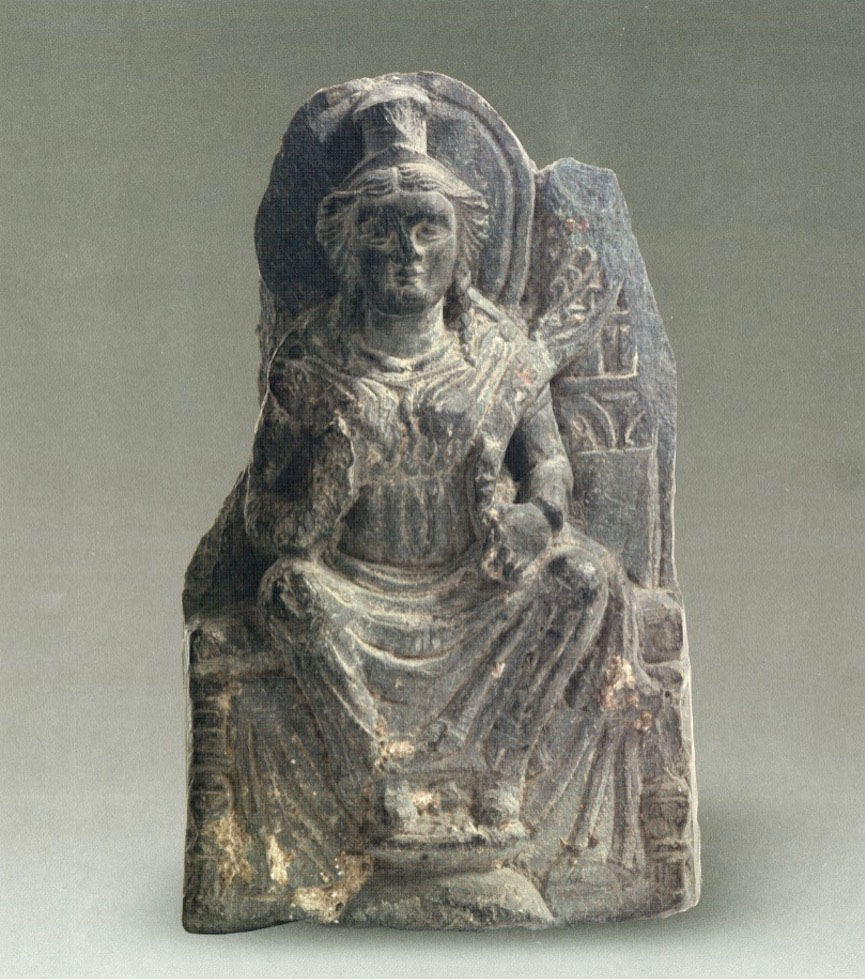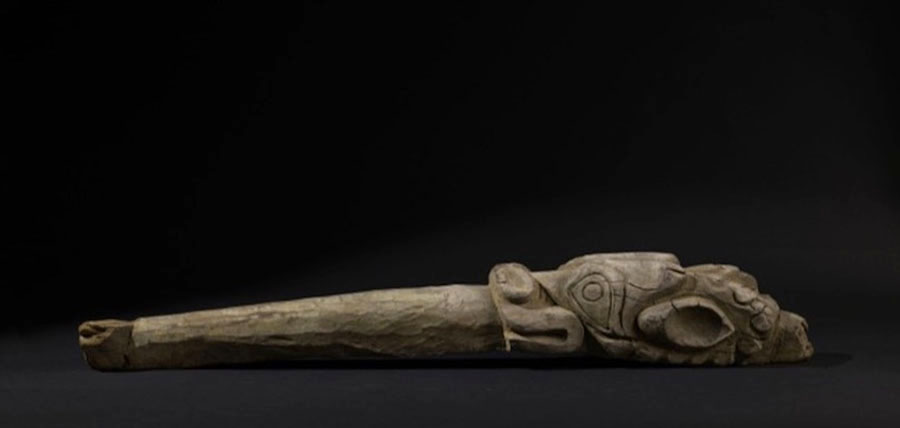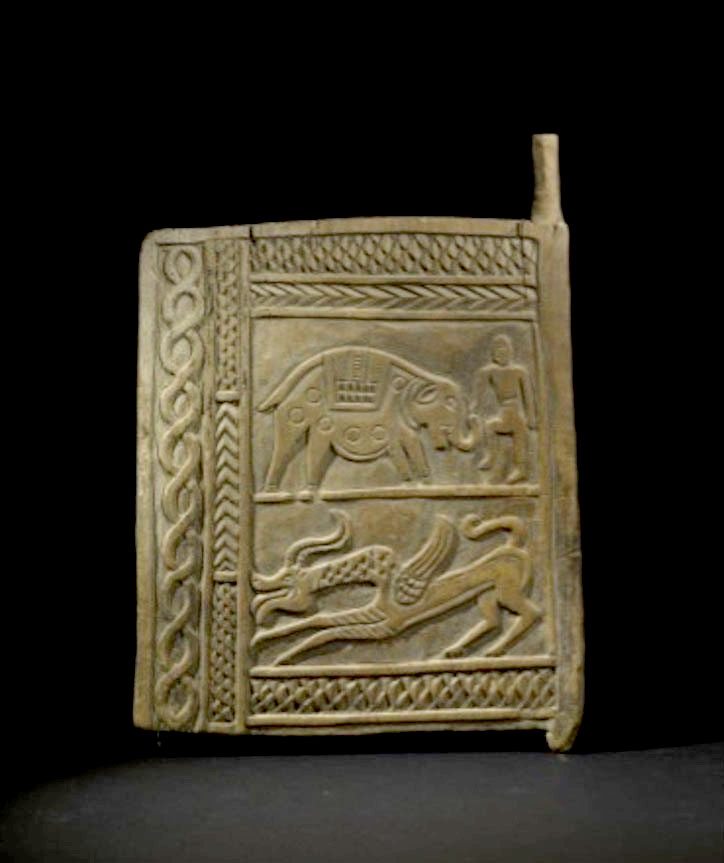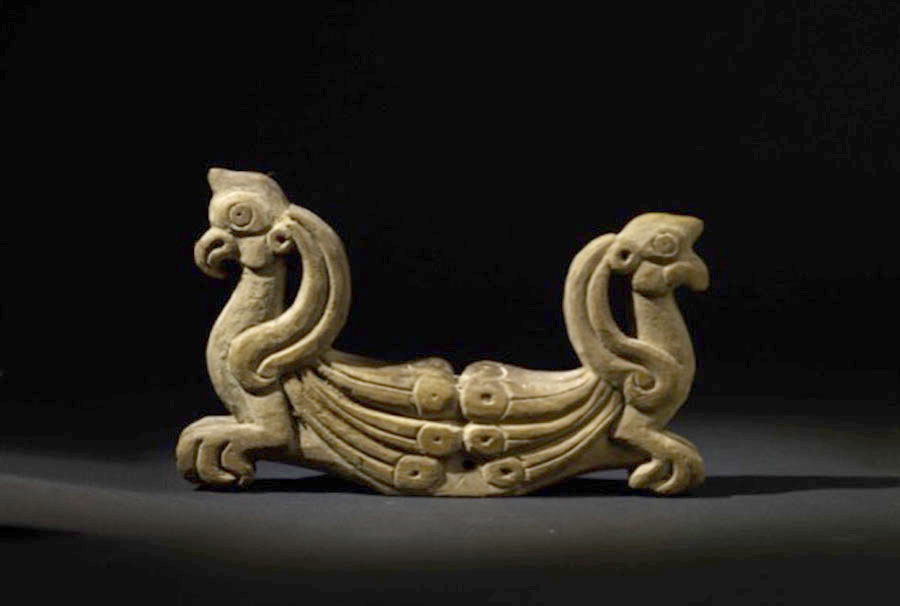The Silk Road and Kushan Dynasty from the Perspective of Cultural Relics
The Silk Road is not only a road of commerce and trade, but also one of spiritual and cultural exchange in the ancient world. Before restrictions on sea routes were lifted, people on the Eurasian continent exchanged goods and ideas through the overland "Silk Road" network. There is an inseparable relationship between the process of civilization on the Eurasian continent and the material, spiritual, and cultural exchanges promoted by the Silk Road.
Along the ancient Silk Road, the role of the Kushan Dynasty (first to fourth centuries CE) was crucial, making important contributions to the development and progress of world civilization in a unique way. From the first to the fourth centuries CE, the territory of Kushan gradually included parts of Central and South Asia, occupying in particular the central area of the Eurasian continent, where all the traveling and communications took place. During this period, the Chinese Empire in the east, the Roman Empire in the west, ancient India in the south, and the nomads in the north were all at important stages of their cultural development and institutional formation. The Kushans remained open to all different civilizations, while the mentality of tolerance ensured exchanges and mutual learning between different cultures, having played an extraordinary role in the progress of human civilization. The stone carvings of the Kushan people fully reflect their cultural openness and inclusiveness.
The territory of Kushan covered roughly what is today Uzbekistan, Afghanistan, Pakistan, and the northern part of India. The original inhabitants of this area must have been able to process stone materials from a very early age. The "Hellenization Age," which began in the fourth century BCE, introduced the Greek art of stone-carving from the west into this area. With the rise of Kushan, more and more stone carvings reflect the "mixing" of this form of art.
The Greek Goddess of the Harvest, holding the Cornucopia in her left hand, sits on a high-backed chair with a halo on her back showing her divinity [Fig. 1]. Her hairstyle and robes, the high-backed chairs with various modifications to their legs and backs, the footrests in front of the chairs, the cornucopia filled with the harvest, and more, are all details that reflect the Greek style. However, the posture of sitting upright is completely different from the dynamic gesture of the Greek statues, as is the light coming from the back, which should be interpreted as the local understanding and expression of divinity.

Fig. 1: Seated goddess of Harvest. (Photo courtesy of the Lushun Museum).
A unique relief of the Buddha shows him sitting and preaching the dharma [Fig. 2]. On his left is a standing disciple, while on the right are Kushan patrons standing hand in hand. A Corinthian column, commonly found in Greek architecture, stands on each side. The Buddha and his disciples wear light cassocks, showing the characteristics of clothing under the influence of the hot climate of South Asia. Kushan patrons with mustaches wear hats and short robes with the hem down to the knees, and their belts are embellished with ornaments. The fact that a piece of stone sculpture can include so many features like the Greek-style pillars showing the solemn atmosphere of the occasion, the religions of South Asia, and the wealthy Kushan patrons fully demonstrates the inclusiveness of Kushan culture.
Especially when Kushan stone-carving was combined with Buddhism coming from the south, it solved the key problem of the continued spread of Buddhism towards the east. The Kushan people were open to beliefs introduced from all over the world, but the various languages adopted along the Silk Road limited the spread of different beliefs, whereas images can help overcome this inconvenience. As for Buddhism, we can see that, in the Gandhara area of Kushan, Buddhism visualized the content of belief through images carved in stone. It can be inferred that this method of dissemination enabled Buddhism to continue to spread eastward, across Xinjiang, through the Hexi Corridor, until finally entering the Central Plains and from there spreading widely throughout East Asia.

Fig. 3: Carved furniture leg with dragon's head. (Photo courtesy of the Khotan Museum)
In its prime, the Kushan Dynasty might have crossed the Congling Mountains and reached as far as Kashgar and Khotan. In cultural relics, we do find some traces of this left behind by history. The three pieces of wooden craft in the Khotan Museum are exquisite examples of the art of sculpture. The eyes, mouth, and ears carved on the furniture leg are in their proper proportions and have been delicately carved [Fig. 3]. The animal relief on the carved plaque is vivid and dynamic, with a man holding the elephant raising his right leg, the elephant arching its back slightly, and the griffin bending over backwards and kicking his legs [Fig. 4]. The structure of a carved holder [Fig. 5] is very similar to the stone beams found at the site of Persepolis in Iran. But if they are examined closely, it is not difficult to see that this wooden craft with exquisite round and relief patterns is not achieved by simple planning and straight sawing. It can be assumed that, at that time, the owners of the wooden crafts had well-developed carving skills and an aesthetic vision, and they had no problem processing stone materials, though they lacked the basic tools for processing wood. Perhaps these were craftsmen moving east from Kushan who could not find suitable stone to carve in the Khotan oasis and devoted their skills instead to carving poplar wood.

Fig. 4: Carved plaque with humans and animals. (Photo courtesy of the Khotan Museum).

Fig. 5: Carved holder with Siamese birds. (Photo courtesy of the Khotan Museum).
The Silk Road does not only belong to China; it actually belongs to the entire Eurasian continent. It is a network of roads constituting the bloodline that has nourished the growth of human civilization in Eurasia. Understanding the Silk Road from this perspective has practical significance for our future development of the New Silk Road.
Yue Wang, Researcher and Deputy Director, Bronze Research Department, Shanghai Museum. Email: ferghana@126.com